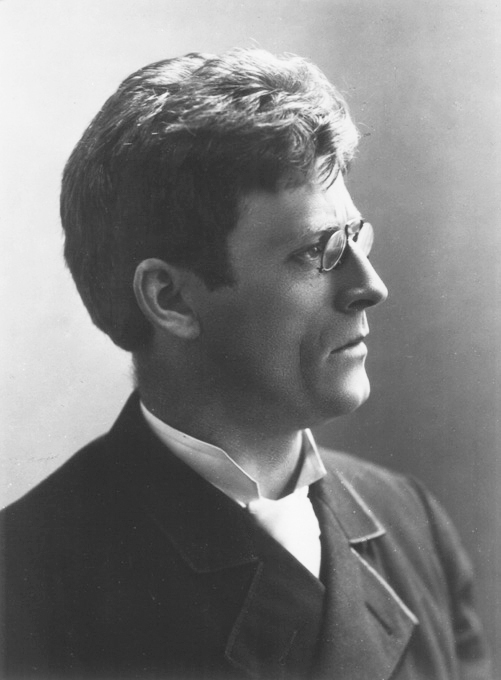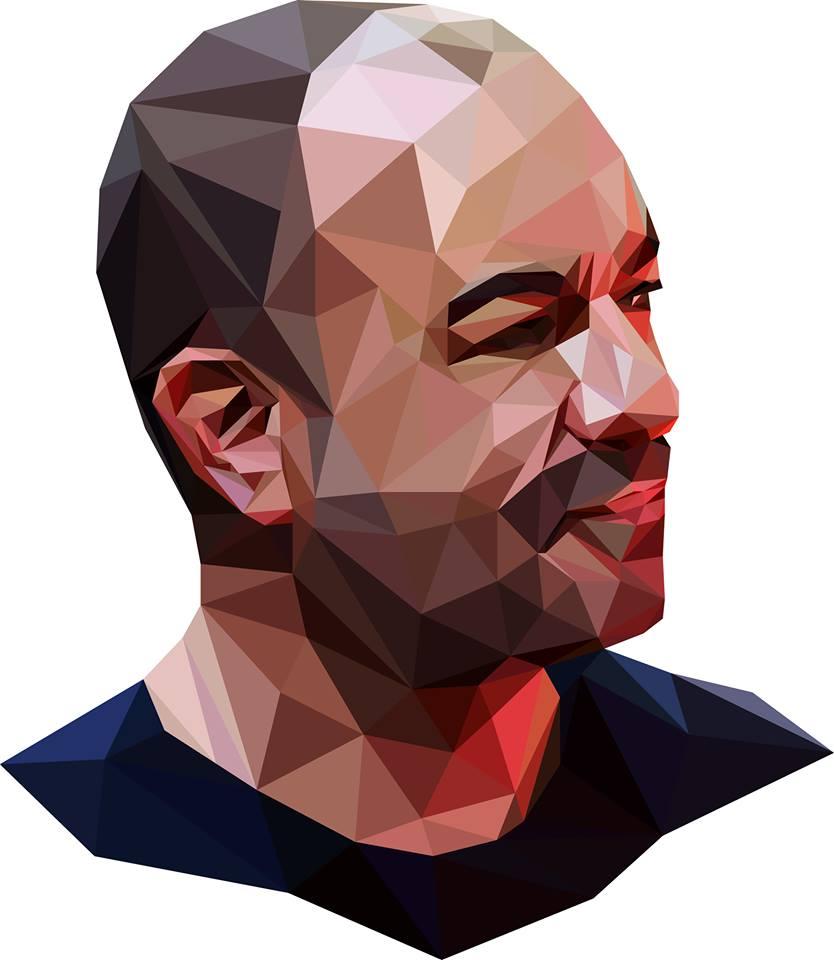by Fraser Hibbitt for the Carl Kruse Blog
Black wood, all black, so black it’s blue, like a raven or a crow in winter sun. Up, up, past the steep gables, up to the dragonhead, sharp and dark and up she points, up through the snow, the tempest, the long, long blackness, then the long, long light, where black she remains, black as the blue of night.
This is the Lom Stave Church, built in the 12th Century in the municipality of Lom. Lom is situated on the northwest side of Innlandet county in central Norway, and it is where Knut Hamsun was born.
Lom. Gateway to the Jotunheim mountains, so steeply they point that it is like they are falling, or growing, or something in between, and you can’t know how big they are until you’re halfway up one of them, and you can see heaven dipping low on their peaks. For Lom is home to the two highest peaks in Norway; Galdhøpiggen and Glittertind.
12 kilometres from Lom’s centre is Gudbrandsdalen valley, and it rolls around and around through heath and greenest pine and tall rock peppered with yellow and brown and white. Playwright Henrik Ibsen travelled through here in the 1860s, picking up stories and legends with which he would eventually write his infamous play Peer Gynt. Here, in Gudbrandsdalen valley, with water is like honey and wind is like poetry, Knut Hamsun spent the first three years of his life, along with his six other siblings. At age three, and as a result of poverty, Hamsun moved with his family to Hamarøy Municipality, deep in northern Norway, all rock and lighthouses and fish, and orange sun on snow mountains, in order to work on Hamsun’s uncle’s farm.
At age 15, and after some horrific years involving extensive abuse at the hands of another of his uncles, Hans Olsen, Hamsun managed to run back into the arms of Lom, his birthplace. Here, Hamsun worked a plethora of different jobs in order to earn his keep, before he eventually began to write, at 17. His first book was published when he was 18 years old, and it was called Den Gaadefulde: En Kjærlighedshistorie fra Nordland (The Enigmatic Man: A Love Story from Northern Norway).
In 1890, when Hamsun was 31 years old, he struck gold: Hunger (1890) earned him international recognition, and it is in Hunger (Norwegian: Sult) that I first met Hamsun myself.
Me and my ex-lover found Hunger in an old bookstore in Hastings, a seaside town in southern England. Near to Dover, where you get the boats over to Europe. We were on our way to the train station, and happened upon the bookstore. It was a big bookshore, lots of books piled up everywhere. Those are the good ones. The good bookstores are a mess. Pity we hadn’t a few hours to spend in there.

My ex-lover had heard of Hamsun before. I hadn’t. He pulled out Hunger from a low shelf, squeezed in between some other books by men. He said ‘Oh my God – I’ve never found a book by him before’. And I said ‘Who is he?’ And then I took the book from him, and turned it over in my hands.
On the cover was a man looking away from me, his hand pulling his hat over his head. He was on a cobbled street, with two women in dresses walking the opposite way to him. It looked like he was looking at them. Over in the distance, there was a semblance of a mountain peeking between the gap of houses and a small church. A beautiful cover, it was.
We bought the book, and another one by Hamsun: Wanderer/On Muted Strings, I think it was called. A novel in two parts. Or perhaps two novels. I can’t remember.
We both read Hunger, me and my ex-lover. I cried at the end of it, but, then, I cry at many books. I also cried at Hamsun’s Victoria, which is an ill-fated love story. I cried especially hard at that one, because I finished it on the train and I imagined my ex-lover, who was sat beside me, dying, and that was very sad to think about.
Hunger was written a long time ago, in 1890, long enough ago to see how life now is nothing like it was then, but not long enough ago to say that life is not the same now as it ever was.
The protagonist of Hunger is a writer in Kristiania (Oslo), who writes articles here and there for a few kroner. He is hungry for most of the novel, so hungry that sometimes he collapses, so hungry that his head gets all spiritual floating and he’s like God, so hungry that he’s selfless as a saint, so hungry that he’s bitter as cherry pips, and violent as a dog.
It starts like this:
‘It was in those days when I wandered about hungry in Kristiania, that strange city which no one leave before it has set his mark upon him…’
and it ends like this:
‘One out in the fjord I straightened up, wet with fever and fatigue, looked in towards the shore and said goodbye for now to the city, to Kristiania, where the windows shone so brightly in every home.’
And nothing really happens, except that her writes some articles and sort of falls in love, and then he leaves it all. He starts with nothing, and ends with even less. All for the love of words, the love of the art, and even that is lost somewhere between starvation and loneliness. My God, it’s a magical book. So cold, so tired, so delicious, so relentless. I would so love to read it in its original Norwegian. But Sverre Lyngstad made good work of his English translation of Hunger, because it is achingly beautiful, and not one bit English at all. That’s the art of translation – use the language only, and keep the heart.
Knut Hamsun was a Nazi, and this makes things difficult. Many of them were Nazis, or racists, or just foul, foul people, many of the writers from before, and perhaps many now, too. People always have their opinions. People hold many opinions that are not so good. Perhaps more so now than ever. The internet has helped that to happen.
Hamsun wrote fondly on Adolf Hitler when news of his death spread throughout Europe. Hamsun is dead, now, too. Do I stop reading his books? I am still confronted with the question of what to do with the art of terrible men. It is different when they’re dead, I think. Because when they’re alive we can still do something about it. Like with J.K. Rowling.
I do not know many people who have read Hamsun, but I know many who would benefit much from reading him. I did not know that Hamsun was a Nazi, because Hunger, and Victoria, and Wanderer/On Muted Strings are not about Nazi things, they’re about people living in little and big towns, falling in love, working hard, hardly working, going mad, going sane, silence, noise. And, anyhow; there are novelists that we still read, who we still study, who were bad men too, who weren’t even half as gifted as Hamsun, men who had good education and middle-class upbringings, who should have known better. Hamsun should have too, of course, but it is different. Hamsun lived in extreme poverty for the entirety of his childhood and into his adulthood. Hamsun taught himself how to write. You feel this when you read him. His writing is naive and made up entirely of heart. It is simply a shame that that heart turned dark, but it does not mean that his art is not great.
When I read books like these, books like Hunger, I am reminded what is it I want to write. Hamsun writes from the heart of man, and in him we see our disgust with ourselves, our repulsion at the state of the world and its people, but also the simple beauty of living, the joy to be found in the pursuit of one’s purpose, the sentimentality of the dying day, the gentle breath of first frost, the rage and the tears, the sweetness of a woman on her tiptoes, holding her hands around your neck.
Hunger does not feel philosophical; it doesn’t ask you to question your morality, nor does it burden you with intellectual ideas. It reads easily, like a children’s book, and the pictures it makes are delicious and foul and delicious, and the hole it leaves within you when you’ve finished is like hunger, is like the hunger to read it all over again.
=============
This Carl Kruse Blog homepage is at https://carlkruse.org
Contact: carl AT carlkruse DOT com
Other articles by Fraser include: Aphorisms on Spring, DNA Day, and On My Failure to Write Anything About The Music I Hear.
You can also find Carl Kruse over at Clearvoice.
